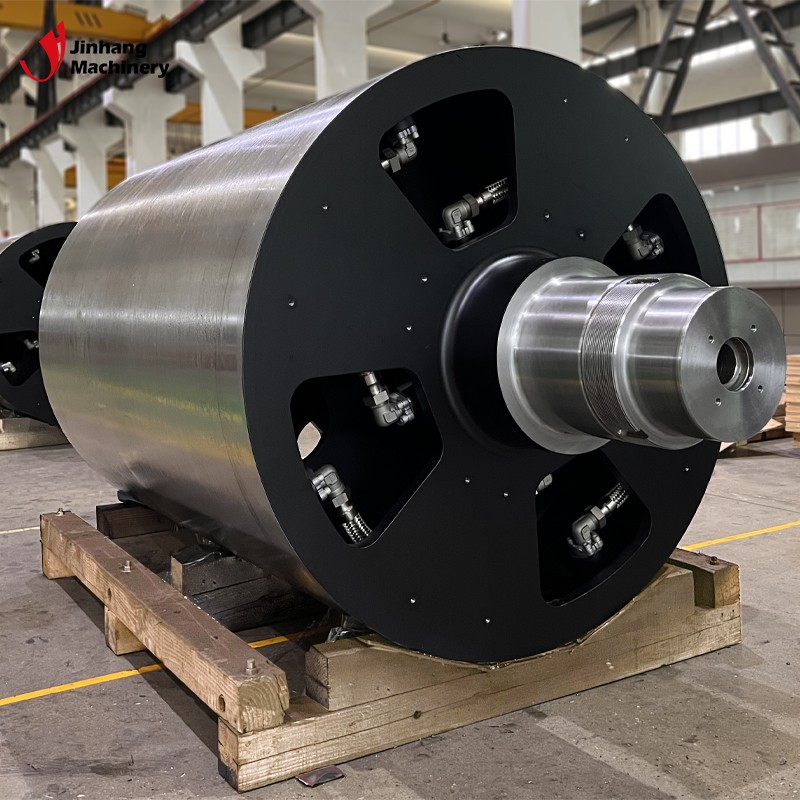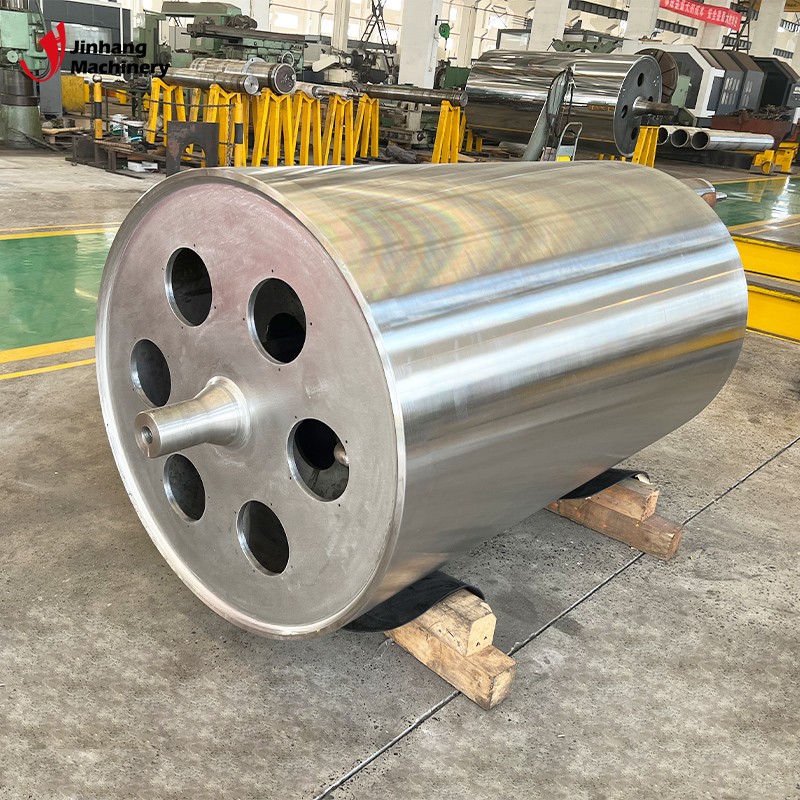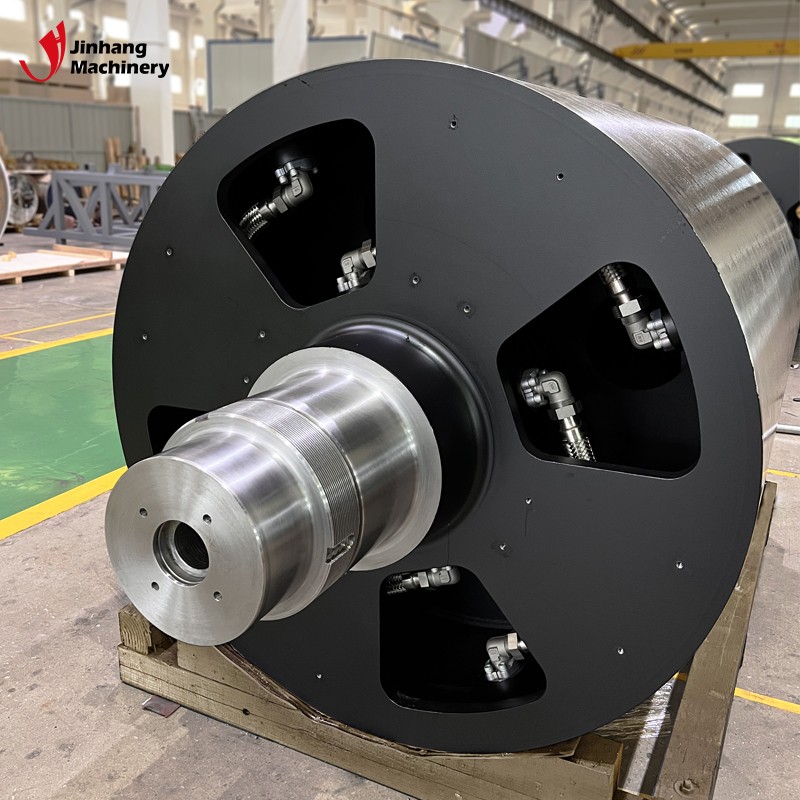What is the difference between a heating roller and a cooling roller?
In the field of industrial manufacturing, heating rollers and cooling rollers are two very common roller devices, which are widely used in industries such as plastic processing, paper production, textile printing and dyeing, and packaging. Although the two devices are similar in appearance, they have significant differences in function, structure, and application scenarios. So, what are the differences between heating rollers and cooling rollers? This article will discuss in depth from multiple aspects such as working principle, functional use, material selection, and temperature control.

What is a heating roller?
A heating roller is an industrial roller device that heats the surface to a specific temperature through a built-in or external heat source, and is mainly used in processing techniques that require heat assistance. Its core function is to transfer heat to the processed material, change the physical properties of the material, and thus achieve softening, bonding, curing, or molding effects.
Typical applications of heating rollers include thermoforming of plastic films, hot pressing of composite materials, and shaping of textiles.
What is a cooling roller?
A cooling roller is an industrial roller device that reduces the surface temperature through a built-in cooling medium (such as water or cooling oil), and is mainly used in processing techniques that require rapid cooling. Its core function is to absorb the heat of the material and make the material solidify or stabilize quickly.
Cooling roller is usually used for cooling and shaping plastic film, processing of heat-sensitive materials, and cooling of metal sheets.
Heating roller and cooling roller: Differences in working principles
Working principle of heating roller
The heating roller transfers the internal energy to the surface through the heat source, and then transfers the heat to the material in contact with it through heat conduction. Common heating methods include:
● Electric heating: built-in electric heating element, suitable for medium and low temperature applications.
● Hot oil circulation heating: provides a stable heat source through a high-temperature heat transfer oil circulation system, suitable for medium and high temperature needs.
● Steam heating: uses high-temperature steam to transfer heat, suitable for large equipment and high temperature scenes.
Working principle of cooling roller
There is a circulating cooling medium (usually cold water or cooling oil) inside the cooling roller, which absorbs the heat between the roller surface and the material through the medium to achieve rapid cooling of the material. The cooling efficiency of the cooling roller is closely related to the following factors:
● The temperature and flow rate of the cooling medium.
● The thermal conductivity and surface area of the roller body.
● The length of time the material is in contact with the roller surface.

Heating roller and cooling roller: the difference in functions and uses
Function of heating roller
The core function of heating roller is to provide the right amount of heat to the material to meet specific process requirements. The following are common functions of heating roller:
● Softening material: For example, in plastic processing, heating roller makes the material reach the softening point, which is convenient for further molding.
● Bonding and curing: In the manufacturing process of composite materials, heating roller activates the adhesive and completes the bonding through heat.
● Surface shaping: For example, the fabric shaping treatment in textile printing and dyeing requires a stable heat source provided by heating roller.
Function of cooling roller
The cooling roller absorbs heat to quickly cool the processed material during the production process. The following are common functions of cooling roller:
● Shaping and curing: For example, after the plastic film is extruded, it needs to be quickly cooled by cooling roller to fix the shape.
● Removing thermal stress: In metal processing, cooling roller can eliminate the thermal stress of the material caused by processing to avoid deformation.
● Control product thickness and surface quality: Prevent material shrinkage or surface defects due to excessive heat through rapid cooling.
Heating roller and cooling roller: Differences in material selection
Material of heating roller
Heating roller needs to work for a long time under high temperature conditions, so it has high requirements for the heat resistance, thermal conductivity and mechanical strength of the material. Commonly used materials include:
● Carbon steel: suitable for medium and low temperature scenes, relatively low cost.
● Stainless steel: suitable for high temperature and corrosive environments, with good heat resistance.
● High temperature alloy: excellent performance under extreme high temperature conditions, often used in special processes.
In addition, the surface of the heating roller usually needs to be chrome-plated or coated with a specific heat-resistant coating to improve its oxidation resistance and wear resistance.
Material of cooling roller
The material selection of cooling roller focuses more on thermal conductivity and corrosion resistance to ensure cooling efficiency and equipment life. Commonly used materials include:
● Aluminum alloy: has excellent thermal conductivity and is suitable for low-temperature cooling.
● Copper alloy: has excellent thermal conductivity, but the cost is high, mainly used for high-precision cooling needs.
● Stainless steel: widely used in scenarios where cooling and corrosion protection are required.
The surface of the cooling roller is usually polished or nickel-plated to increase heat dissipation efficiency and reduce friction between the material and the roller body.

Heating roller vs. cooling roller: Differences in temperature control
Temperature control of heating roller
The temperature control system of the heating roller usually includes a temperature sensor, a PID controller, and a heat source regulator. Modern heating rollers are capable of precise temperature control, with a common control accuracy range of ±1°C to ±5°C.
● For low-temperature processes (such as textile printing and dyeing), the operating temperature of the heating roller is usually between 50°C and 150°C.
● For high-temperature processes (such as plastic composites), the operating temperature can reach 200°C to 400°C.
Temperature control of cooling roller
The temperature control of the cooling roller is mainly regulated by the flow, temperature, and pressure of the cooling medium. By adjusting these parameters, the surface temperature of the cooling roller can be accurately controlled. The surface temperature of the cooling roller is usually maintained between 5°C and 50°C.
● In processes that require rapid cooling, the temperature of the cooling water can be as low as close to the freezing point.
● When processing heat-sensitive materials, the temperature of the cooling medium needs to be moderately increased to avoid material damage.

Heating roller and cooling roller: Synergy between heating roller and cooling roller
In some complex processes, the heating roller and cooling roller need to work together. For example, in a plastic film production line, the heating roller is used to soften the material for extrusion, while the cooling roller is used to quickly cool the material after molding to fix the shape. The cooperation between the two directly affects the quality and production efficiency of the final product.
Custom Rolls Designed for Maximum Efficiency – Get Your Quote Today
Looking for high-quality, customized rolls for your machinery? JH Machinery is here to provide you with precisely engineered rolls that are designed to improve efficiency and performance. Our extensive product lineup includes polyurethane rolls, rubber rolls, tungsten carbide-coated rolls, and ceramic-patterned rolls. We specialize in offering custom solutions tailored to your specific needs, ensuring that your equipment runs smoothly and efficiently. Benefit from our affordable prices and bulk discounts by purchasing directly from our factory in China. Contact us now for quotes and additional information on our products and services.
